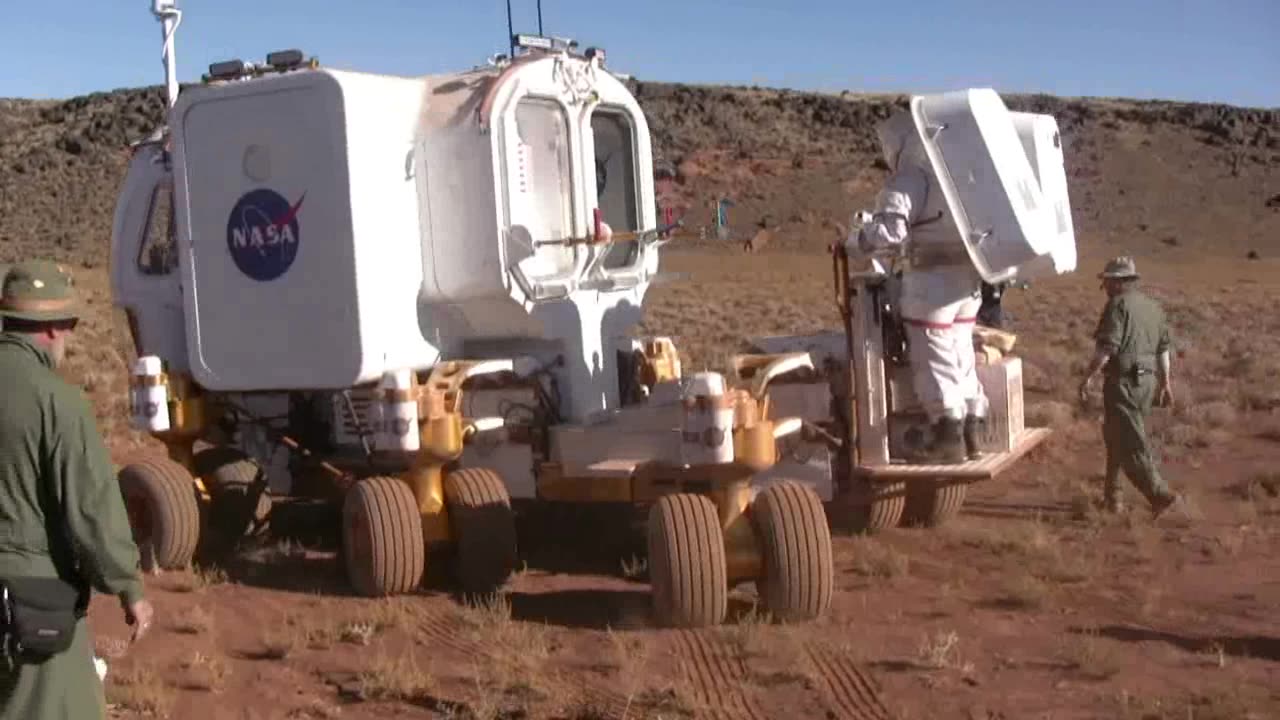Premium Only Content

Analog Technology for Future Settlement Missions on Moon and Mars Furthermore.....
Human exploration beyond low-Earth orbit (LEO) will require a unique collection of
advanced, innovative technologies and the precise execution of complex and challenging
operational concepts. One tool we in the Analog Missions Project at the National
Aeronautics and Space Administration (NASA) utilize to validate exploration system
architecture concepts and conduct technology demonstrations, while gaining a deeper
understanding of system-wide technical and operational challenges, is our analog missions.
Analog missions are multi-disciplinary activities that test multiple features of future
spaceflight missions in an integrated fashion to gain a deeper understanding of system-level
interactions and integrated operations. These missions frequently occur in remote and
extreme environments that are representative in one or more ways to that of future
spaceflight destinations. They allow us to test robotics, vehicle prototypes, habitats,
communications systems, in-situ resource utilization, and human performance as it relates to
these technologies. And they allow us to validate architectural concepts, conduct technology
demonstrations, and gain a deeper understanding of system-wide technical and operational
challenges needed to support crewed missions beyond LEO. As NASA develops a capability
driven architecture for transporting crew to a variety of space environments, including the
moon, near-Earth asteroids (NEA), Mars, and other destinations, it will use its analog
missions to gather requirements and develop the technologies that are necessary to ensure
successful human exploration beyond LEO. Currently, there are four analog mission
platforms: Research and Technology Studies (RATS), NASA’s Extreme Environment
Mission Operations (NEEMO), In-Situ Resource Utilization (ISRU), and International Space
Station (ISS) Test bed for Analog Research (ISTAR).
-
 16:21
16:21
Actual Justice Warrior
1 day agoSuper Mayor Replacement SCAMS Voters
24K15 -

Sacred Sage
3 hours ago $0.46 earnedClair Obscur: Expedition 33: How MASSIVE Is This Map?!
8.17K2 -
 LIVE
LIVE
The Goon Room
5 hours agoConan Exiles Restart
101 watching -
 10:17
10:17
Dr Disrespect
3 days agoIt's Time To Get Serious
164K24 -
 2:04:24
2:04:24
Side Scrollers Podcast
23 hours agoColbert CANCELLED, Donkey Kong Bananza “Disappointing”, $100k in Pokémon STOLEN | Side Scrollers
25.8K8 -
 1:17:57
1:17:57
Omar Elattar
1 month ago"The #1 Health Protocol" – Gary Brecka REVEALS The Longevity Secrets of Ronaldo, Dana White & Top 1%
25.9K1 -
 21:29
21:29
GritsGG
18 hours agoUpdate Your Loadout w/ This KILO Sniper Support Build!
22K4 -
 LIVE
LIVE
Lofi Girl
2 years agoSynthwave Radio 🌌 - beats to chill/game to
339 watching -
 10:29:07
10:29:07
SpartakusLIVE
17 hours agoFriday Night HYPE || WZ Solos, PUBG, and maybe even OFF THE GRID?!
106K -
 3:24:24
3:24:24
megimu32
12 hours agoOFF THE SUBJECT: FAFO FRIDAY - Bodycam Madness + Mortal Kombat Mayhem!
64K10